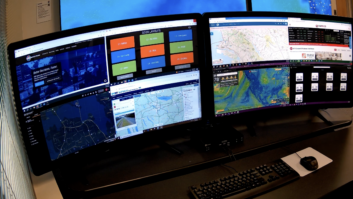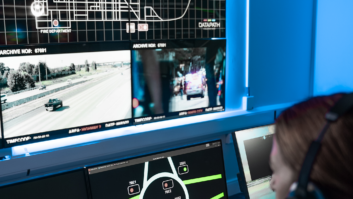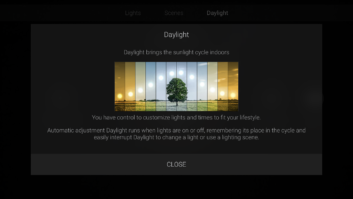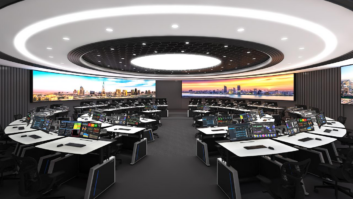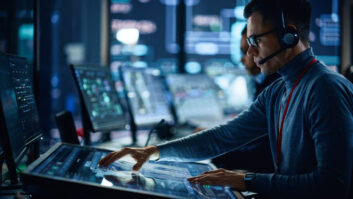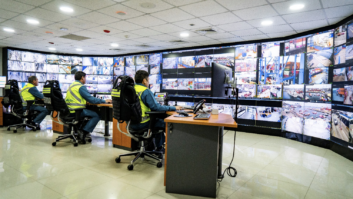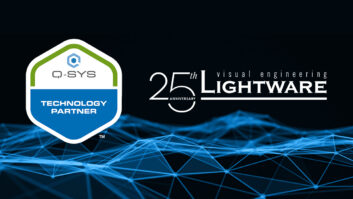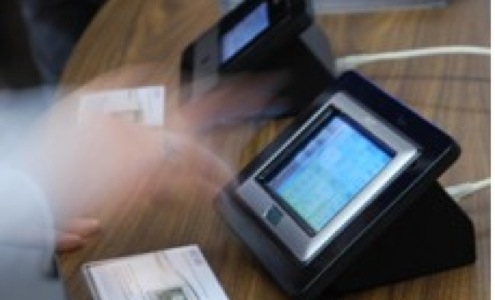
Touchscreen control system interface – image courtesy of Blair Parkin
Also known as room control, show control, touch control and executive remotes, control systems can simplify and integrate the control of many different technologies in a built environment. This ranges from the base building systems such as lighting and HVAC through to media systems such as video projection, audio and data presentation. Blair Parkin, managing director of consultancy Visual Acuity, explains their architectural impact.
Level of architectural impact
4 (see key below)*.
Control systems can be applied or retrofitted to existing spaces to provide a simple interface to a meeting room or presentation space. They can also be designed and fully integrated into a new building to provide a much higher level of functionality. By providing a consistent user interface via touchscreens, switch panels and remote devices such as iPads, PDAs etc the occupants and users of a space can gain much better control over their environment. This control can mean improved lighting conditions allowing users to open and close blinds, switch lights on and off and adjust the temperature range of their workspace. This enhanced occupant control of the environment can help achieve formal sustainability standards for a new build such as BREEAM or LEED. The integration of such a control system requires planning for the position of the control interfaces, co-ordination between the architectural lightning designer, HVAC and BMS engineer, AV consultant and the client requirements for executive and occupant control.
*Key to architectural impact scores:
High (7-10) – Architectural designs required to incorporate structures, specialist services, points of connection and take into account sight lines, positions and adjacencies.
Medium (4-6) – The architect requires awareness of positions and services but the technology does not impact proportions and adjacencies of spaces.
Low (1-3) – Architectural designs not directly influenced by the technology though awareness and showing on drawings would assist project communication.
What exactly is a control system anyway?
A control system is perceived by the user as a touchscreen, switch panel or remote device with iconographic buttons that when pressed sequence events from the simplest functions such as turning lights on and off to the more complex:, for example, recalling a complete scene that could include closing blinds, starting a corporate video, lowering a projection screen and many other functions besides. Behind the scenes the touchscreen interface is connected to a rack of control electronics which is then in turn connected and interfaced to other systems such as lighting, HVAC, media playback, projection and sound. A good control system can be interfaced to virtually any electronic or electrical system or device.
What are they used for?
A control system provides a top level intuitive control interface for multiple complex systems. How do they work?
A control system is essentially a network device with a central control rack or computer that connects to multiple devices from many different brands and functions. The central control has software that has been programmed with many different control protocols to mimic the control functionality of everything from the thermostat, the light switch to the video projector and DVD remote control. Thus one system takes over the functionality of many others and provides a single consistent user interface.
Touchscreen control – image courtesy AMX
Which technology should I choose?
A control system is best specified by listing the devices that it needs to control and the type of functionality required. Different control systems have limitations as to the number of devices they can connect to simultaneously. Some systems are more scalable than others. Control systems may already have software drivers available for the lighting and media systems selected. If not, these either have to be programmed or select another control system that already has software for the devices you wish to control. The control system supplier, systems integrator or consultant will be able to specify what is required and design the necessary system and infrastructure.
